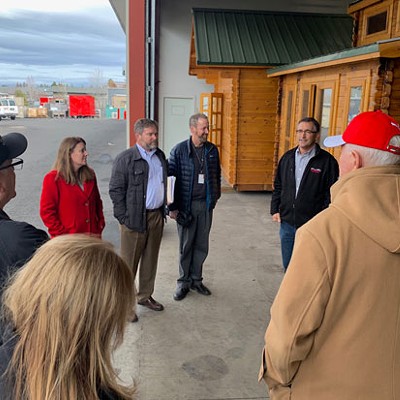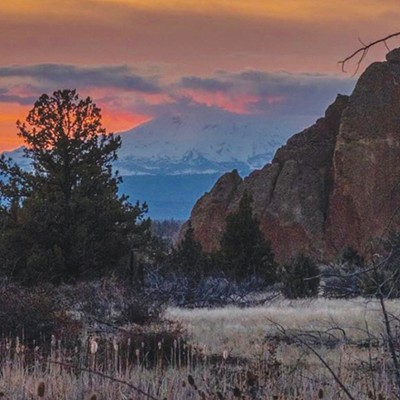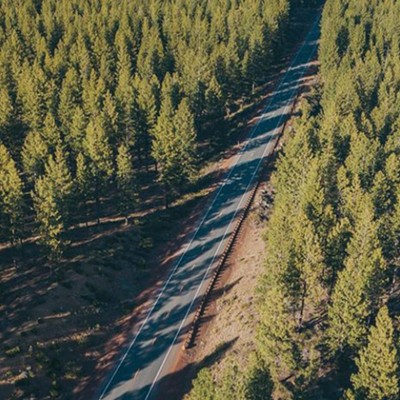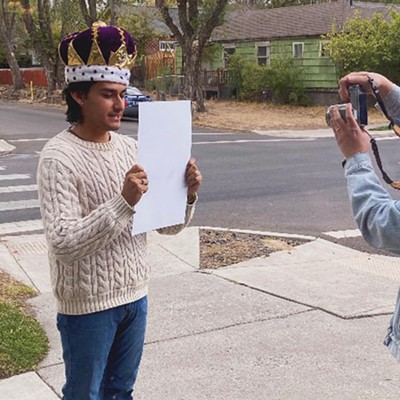In response to "Wilderness - Mt. Bike Fight Brewing" (3/31)
Studies conducted at Starkey Research station in Oregon show that mountain bikes and ATVs have higher disturbance effects on elk than do hiking and horseback riding, so it's hard to make the case that "mountain bikes do less damage than horses."
Nor is it accurate to say that "leaving a tire track is far less impactful than a hunter killing an animal." Sportsmen fund the bulk of state fish and wildlife agencies' budgets. They also contribute hundreds of millions of dollars annually through the Pittman-Robertson act, the Dingell-Johnson act, the Federal Duck Stamp program and others. Hunting is tied to conservation in a way that mountain biking and other forms of outdoor recreation are not.
The Wilderness act isn't about favoring one user group over another. It's about preserving the values that made establishing the act necessary in the first place.
~Ed Putnam
In response to "Tiny Homes" (3/24)
While I love the tiny home concept (have been in a few...know some who have built them), but other than the loft space, why not just buy a much cheaper trailer? Which according to the article, is already built within code. And just a note...there are quite a few RVs in driveways and in the streets that appear to have people living in them...not RV parks.
~Doug Cristafir
In response to "Tiny Homes" (3/24)
The City of Bend and Jim [Long] need to address tiny homes in a real practical manner. Cottage code... one acre lots...What a joke! The city would rather see folks sleep on the ground, just to protect the ridiculous value of land/homes they own in Bend. Put 20 on a standard lot! Figure it out. #doyourjob
~K. Colussi
Alpha pair and two yearlings killed
Last week, the Oregon Department of Fish & Wildlife killed four wolves of the Imnaha pack (including the alpha male, father of the infamous OR-7 who traversed California looking for a mate), citing "problem wolves" preying on cows and sheep.
When wolves first crossed the border into Oregon, I attended a presentation given by ODFW in Bend. Rather than celebrate wolves, the language used was predictable - "problem wolves... depradation... chronic losses... euthanasia...". Euthanasia is mercy killing. There is no mercy in a system that murders reintroduced animals for being carnivores, so let's start by using the correct language. Furthermore, livestock losses to wolves and other predators accounts for 0.23% of total losses. Wolves are just a scapegoat.
ODFW is an agency that facilitates the killing of wildlife, be it through hunting, fishing, trapping or federal execution. Here we are, in the midst of the sixth extinction with 52 percent of the world's wildlife obliterated in just four decades (Living Planet Report), and we wonder why there's a lurking misery around us.
~Vanessa Schul
In response to "Go Here: Mountain Biking for Girls," (3/24)
Mountain biking, besides being expensive and very environmentally destructive, is extremely dangerous. Serious accidents and even deaths are commonplace.
Bicycles should not be allowed in any natural area. They are inanimate objects and have no rights. There is also no right to mountain bike. That was settled in federal court in 1996. [Bicycle Trails Council of Marin vs. Babbitt, 9th Circuit Court, 1996.] It's dishonest of mountain bikers to say that they don't have access to trails closed to bikes. They have exactly the same access as everyone else – on foot! Why isn't that good enough for mountain bikers? They are all capable of walking.
A favorite myth of mountain bikers is that mountain biking is no more harmful to wildlife, people, and the environment than hiking, and that science supports that view. Of course, it's not true. Mountain biking accelerates erosion, creates V-shaped ruts, kills small animals and plants on and next to the trail, drives wildlife and other trail users out of the area, and, worst of all, teaches kids that the rough treatment of nature is OK (it's not!).
~Mike Vandeman
In response to "Tiny Homes," (3/24)
That was a truly amazing article that [Brian Jennings] wrote. We thank you for highlighting this issue. I wrote a response to some of Jim Long's assertions. I'd like to clarify a few assumptions that Jim Long makes in this article.
Comments are below:
1. The "cottage code" that Long says is part of the solution to Bend's housing crisis doesn't make financial sense when you consider the land that is currently for sale in Bend. To adhere to the code, the lot must be an acre or more. According to Zillow there are 16 lots over one acre within the city limits; however, 14 of these are in subdivisions such as, North Rim, Awbrey Butte and Skyliner Summit which have CCRs [Covenants, Conditions and Restrictions] and don't allow for cottage housing. This leaves only two lots, which cost $1.25 million and $1.54 million, respectively.
If you built four tiny houses on this land – the subdivided lots would cost $312,000. Add $100,000 to build the house and you're looking at a 400 square-foot house that would cost over $400,000. If you bought a cottage house in this development, you would be the proud owner of the most expensive per square foot house in Bend.
2. Jim Long also says he has concerns about safety. "They're not covered by any kind of building code, and that's the scariest thing that I find."
We fully agree with him on this point. We have been trying to work with the city for over a year to design this code. We've even sent the city sample code based on a blog post from Eli Spevak.
The fact is, people are building and living in Tiny Houses right now in Bend. We need to come up with this code to keep people safe. We would love to meet with Jim Long and discuss what this code could look like. Let's do this sooner than later.
3. Jim Long says that Tiny Houses are technically RVs. Not true. Tiny Houses are insulated like a regular house. They are designed to be lived in year round – RVs are not. The plastic, synthetic resins, and vinyl used to build RVs are laced with various chemicals such as formaldehyde, petroleum-based toxins and a variety of other chemicals which cause harmful off-gassing and have been shown to cause cancer. Tiny houses can be built with materials that are free of toxic materials. And the most important difference: A Tiny House feels like you are living in a house, not squatting in a trailer.
We look forward to meeting with Jim Long or anyone else who wants to discuss real solutions to the problem our hometown is facing.
~Jesse Russell, TongueandGrooveHomes.com
Dear Jesse ~ Thank you for responding to the issues brought forward in the "Tiny Homes" feature story. This article resonated with many people in the community and beyond, who have written, stopped by the office, commented online, tweeted and shared the article via social media. Please continue the conversation with a cup of coffee on us. Pick up your Palate gift card at the Source Weekly office.























